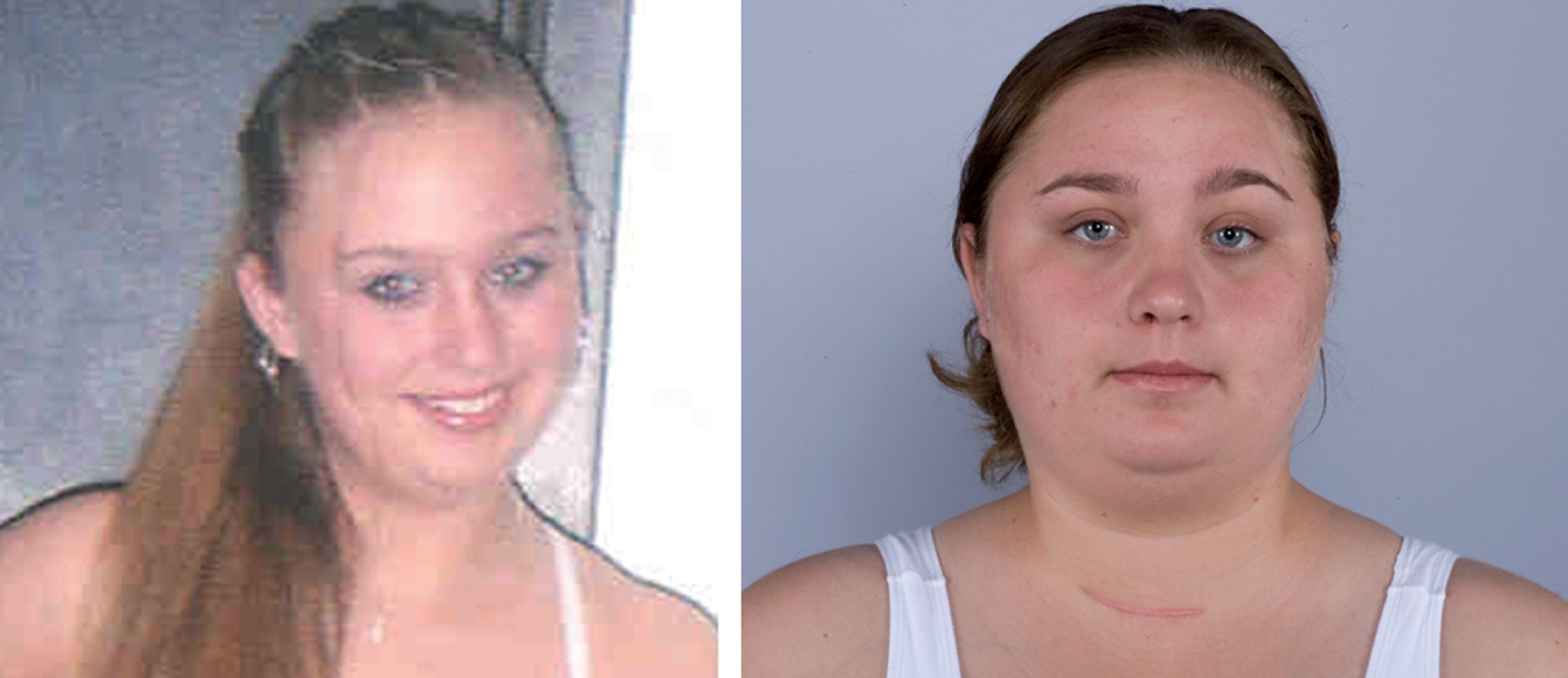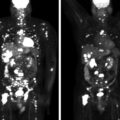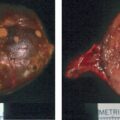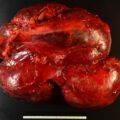When a patient with multiple endocrine neoplasia type 1 (MEN-1) presents with Cushing syndrome (CS), it may be corticotropin (ACTH) independent (e.g., adenoma, carcinoma, or bilateral macronodular adrenal hyperplasia) or ACTH dependent (e.g., pituitary adenoma, ectopic ACTH secretion from bronchial carcinoid, thymic carcinoid, or pancreatic neuroendocrine tumor). , Herein we present a patient with MEN-1 who presented with ACTH-dependent CS.
Case Report
The patient was a 20-year-old woman referred for evaluation and management of CS in the setting of MEN-1 (pathogenic variant in menin gene: c.35C>T [p.Pro12Leu]). MEN-1 was diagnosed 6 months before she came to Mayo Clinic when she presented with multiple gland primary hyperparathyroidism requiring two operations and resection of three and a half parathyroid glands. Over 6–12 months before her Mayo Clinic endocrine consultation she experienced the following: 80-pound weight gain, red striae on her medial thighs and abdomen, scalp hair loss, oligomenorrhea, and hirsutism on the jawline and low midline abdomen. She had been diagnosed with polycystic ovarian syndrome and insulin resistance and was treated with metformin 500 mg twice daily. Owing to progression of the aforementioned symptoms listed and weakness going up stairs, 24-hour urinary free cortisol (UFC) excretion was obtained and was elevated at 96 mcg (normal, <45 mcg)—a finding that triggered referral to Mayo Clinic.
On physical examination, body mass index was 37.2 kg/m 2 , blood pressure was 118/75 mm Hg, and heart rate 93 beats per minute. She appeared cushingoid based on the following: facial rounding; increased fat deposition in the supraclavicular and dorsocervical areas; excess terminal hair on the cheeks, chin, and low midline abdomen; and pink to darker red striae in vertical orientation across the abdomen and some striae on the upper medial thigh and axillary areas as well. Her appearance was markedly different from that in a photograph taken 2 years earlier ( Fig. 64.1 ).

INVESTIGATIONS
The laboratory test results are shown in Table 64.1 . The serum cortisol concentrations showed lack of normal diurnal variation. The 24-hour urine free cortisol (UFC) excretion and salivary cortisol concentrations were more than threefold elevated above the respective upper limits of the reference ranges. The 2-day formal low-dose dexamethasone suppression test (DST) (0.5 mg of dexamethasone every 6 hours × 48 hours) showed marked cortisol suppression in the blood and urine—to levels seen in normal individuals. A recent metaanalysis of 139 studies with 14,140 participants showed that the sensitivity and specificity (95% confidence interval) for the 2-day low-dose DST were 95.3% (91.3%–97.5%) and 92.8% (85.7%–96.5%), respectively. Thus like in all CS-related testing, there are no absolutes and there is no single best test for all patients. Approximately 5% of patients with pituitary-dependent CS will have normal suppression of cortisol with the formal 2-day low-dose DST—the patient presented here is a good example. It is up the clinician to build a wall of evidence to confirm CS before proceeding to subtype evaluation and treatment. In this patient the diagnosis of CS was firm based on clinical signs and symptoms, marked change in physical appearance, and marked elevations in baseline 24-hour UFC and late-night salivary cortisols (see Table 64.1 ).
| Biochemical Test | Result | Repeat Test Result | Reference Range |
| Sodium, mEq/L Potassium, mEq/L Fasting plasma glucose, mg/dL Creatinine, mg/dL eGFR, mL/min per BSA Calcium, mg/dL Phosphorus, mg/dL 8 am serum cortisol, mcg/dL 4 pm serum cortisol, mcg/dL 24-Hour UFC, mcg 24-Hour urine volume, L Late night salivary cortisol, ng/dL ACTH, pg/mL DHEA-S, mcg/dL Prolactin, ng/mL IGF-1, ng/mL Chromogranin A, ng/mL HPP, pg/mL Glucagon, pg/mL Gastrin, pg/mL 2-Day low-dose DST: 8 am serum cortisol, mcg/dL 24-Hour UFC, mcg | 138 4.1 75 0.8 >60 9.6 3.5 14 22 206 2.2 320 26 320 13 147 84 <40 48 13 1.4 6.8 | 96 2.4 286 42 | 135–145 3.6–5.2 70100 0.6–1.1 >60 8.9–10.1 2.5–4.5 7–25 2–14 3.5–45 Goal <4 L ≤100 10–60 44–332 327 122–384 <225 <228 <80 <100 <1.8 <10 |
Stay updated, free articles. Join our Telegram channel

Full access? Get Clinical Tree








